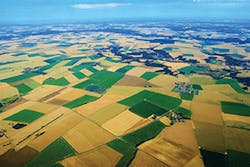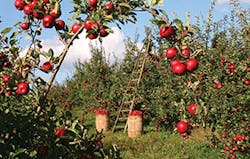Utilizing Dynamic Spectrum Access Technologies to Connect Billions —
Radio spectrum is the vital resource needed for any wireless communication and is a finite resource. Historically, it has been seen as a scarce resource due to the standard way that spectrum has been managed. In the case of fixed and mobile communications, spectrum is licensed by governments and regulators to network operators through different assignment mechanisms, and then specific bands of spectrum become privately licensed. Network deployment will depend on the interest of the operators; and this exclusive assignment process can result in portions of spectrum going unused.
A key way to make spectrum abundant is through the use of dynamic spectrum sharing. Spectrum should be opened to new players wherever sharing is possible, to bring innovative and affordable connectivity. Spectrum sharing is the end of spectrum scarcity, and provides a very real and possible opportunity to connect the unconnected.
Benefits for Rural Communities
Dynamic spectrum access technologies can be utilized to connect billions of people living in rural areas.
For communities based in rural and sometimes isolated locations, being connected can bring instant benefits that would otherwise be unattainable or require expensive and time-consuming travel.
RURAL LOCATIONS: Those being educated in rural locations can sometimes be limited by the existing physical resources such as textbooks or equipment. The Internet has the ability to connect children and young students to instantly accessible knowledge that is up-to-date, as well as giving them the opportunity to connect to people not just locally or even nationally but worldwide.
PUBLIC ACCESS CENTERS: Public Access Centers, such as libraries, and community networks provide a solution to reach the billions of people who are unconnected or underserved. These centers promote digital inclusion through technology and information access, as well as they reinforce the community relations and productivity in the domains that are relevant to its members. Additionally, connectivity provides new job opportunities as well as remote access to jobs located in urban and international locations.
MEDICINE AND NURSING: Within the areas of medicine and nursing, access to broadband also offers patients a way to meet remotely with specialist doctors and practitioners with the possibility to remain aware of research and new treatments, allowing them to care for their patients with the support of international resources. Further to this, the Internet supports quicker response times for medical tests, allowing faster treatment of critically ill patients.
InvisiLight® Solution for Deploying Fiber
April 2, 2022Go to Market Faster. Speed up Network Deployment
April 2, 2022Episode 10: Fiber Optic Closure Specs Explained…
April 1, 2022Food for Thought from Our 2022 ICT Visionaries
April 1, 2022RURAL AGRICULTURE: Whilst developments such as smart cities might seem like a far-off future for some rural locations (the term smart city by definition is exclusive of rural locations), the first step of connecting a community to the Internet brings this reality significantly closer. Solutions such as smart farming that can increase the efficiency of rural agriculture or smart grids that prioritise resources to reduce waste, can enable a community to create transformative opportunities and make services truly universal.
DIGITAL RURAL GENDER DIVIDE: It is important that nobody is left behind, and that the digital rural gender divide is addressed. It has been estimated that 28 trillion dollars would be added to the GDP if women have the same access to the labor market as men, but access alone is not going to achieve digital inclusion. Integrating digital gender inclusion considerations, such as identifying local barriers, skill levels, and needs, and engaging with community gatekeepers, will make a significant difference in ensuring nobody is left behind.
Dynamic Spectrum Access Technology
Connecting a rural community to the Internet can increase the efficiency of rural agriculture.
Traditional digital inclusion efforts with traditional technologies and spectrum management approaches have fallen short of expectations and have left many people still unconnected, as the focus has often been on individuals rather than the infrastructure. Affordable and sustainable policies needed to allow broadband access in rural locations in the first place.
Television White Space (TVWS) refers to the unused spectrum in frequency allocated for broadcast at a given time in a given geographical area. TVWS could be used to provide high-capacity affordable broadband access, and is one of the technologies available for closing the digital divide through dynamic spectrum sharing.
Using Dynamic Spectrum Access technology, a White Space Device (WSD) evaluates the radio frequency environment and determines which frequencies are available for use without interfering with other services. This happens dynamically in real time to allow for the most effective and efficient use of the available frequencies.
TVWS radios offer broadband speeds over several kilometres, as well as supporting signals that can travel through permanent obstacles such as trees, buildings, and challenging terrain. This makes TVWS the ideal candidate to provide rural broadband access as it reduces the amount of physical infrastructure that is needed; point-to-point links can connect at up to 30 kilometres.
Further to this, as TVWS becomes more readily available, an increasing number of providers are developing equipment and reducing the cost, making TVWS more accessible.
Finally, the infrastructure needed for TVWS is simple and straightforward to deploy.
An International Effort Needed
With around 3.6 billion people worldwide still not connected to the Internet, and 14% of the global population without access to the Internet, collaboration between countries and organizations is crucial to achieving a fully connected world.
Strong alliances and relationships in the telecommunications industry are fundamental to providing inclusive and affordable connectivity to rural and isolated locations around the world. It is vital to combine the power and knowledge of separate entities in order to reach these goals faster and leverage regulators and policy-makers to change outdated standards. Operators, regulators, governments, and alliances, all have the ability to affect change and address these issues, and we are already beginning to see this happening.
Many organizations around the world are now collectively working on spectrum-sharing methods that will bring affordable connectivity to rural communities. Many worldwide regulators have adopted TVWS rules and/or approved the regulatory framework for TVWS, such as USA, Canada, United Kingdom, Singapore, Colombia, Trinidad and Tobago, Korea, the Philippines, South Africa, and Mozambique. Yet, there is more to be done, and dynamic spectrum-sharing advocates are encouraging governments to allow shared access to TVWS spectrum, enable regulatory framework, and encourage innovative business models.
Like this Article?
Subscribe to ISE magazine and start receiving your FREE monthly copy today!
For more information about, and to download, the statistical report Measuring the Information Society Report, Volume 1, 2018, by ITU publications, please visit https://www.itu.int/en/ITU-D/Statistics/Documents/publications/misr2018/MISR-2018-Vol-1-E.pdf.
The Dynamic Spectrum Alliance (DSA) represents 5 of the top 10 largest companies in the world, and more than 50% of the top 30 Internet market capitalization leaders worldwide, promoting collaboration and focusing on a united effort to promote dynamic spectrum sharing and universal access for all. The Alliance’s membership spans multinationals, small-, and medium-sized, enterprises from around the world, as well as academic and research organizations. For more information, please email [email protected], or visit http://dynamicspectrumalliance.org/. Follow the DSA on Twitter @DynamicSpectrum.











